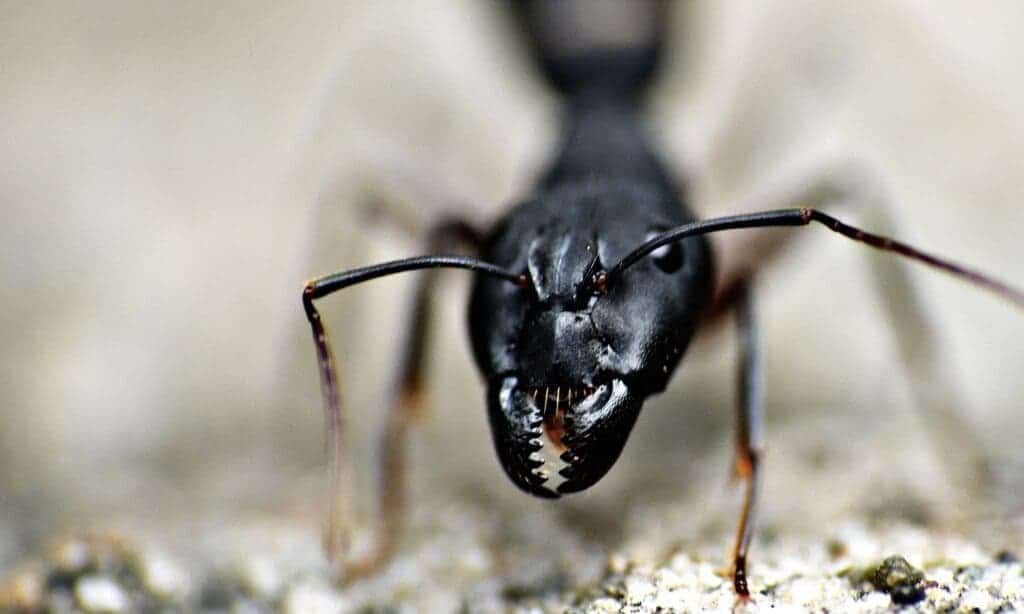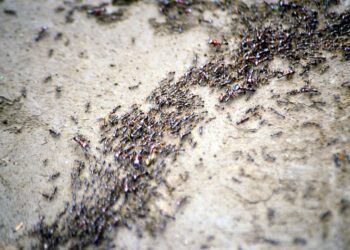
It’s no secret that ants are exceptionally strong and fast relative to their body size. The average ant can carry up to 50 times its own body weight and can scurry away at a rate of nearly 800 times its body length a minute. However, it’s a lesser-known fact that ants also possess super strong teeth, which they use to chomp down on their picnic loot and burrow tunnels into the soil.
Now, scientists have zoomed in on the insects’ tiny dentures using atomic-scale imaging to learn more about what makes teeth so strong and sharp. In the process, the secret they revealed could be used to develop new miniature tools.
Teeth like a scalpel
Researchers at the University of Oregon and the U.S. Department of Energy’s (DOE’s) Pacific Northwest National Laboratory (PNNL) developed special techniques for measuring the hardness, elasticity, and mechanical resistance of objects at a miniature scale. The ant tooth, which is attached to an oversized mandible thinner than a strand of hair, marked the perfect occasion to test these techniques.
Materials scientist Arun Devaraj and doctoral intern Xiaoyue Wang, both from PNNL, focused an ion beam microscope on the tip of a tiny ant tooth. They used atom probe tomography to image the sample hit by the ions, allowing them to identify how individual atoms are arranged in the dental structure.
This investigation showed that the ant tooth is composed of individual atoms of zinc arranged in a specific, even pattern that ensures maximum cutting efficiency. What’s more, the structure also prevents the teeth from going dull, maintaining their sharpness throughout the insects’ lifetimes. And since the zinc atoms are distributed equally across the tooth, so is the biting force whenever the ant crunches on something relatively large, protecting its mandible.
“We could see that the zinc is uniformly distributed in the tooth, which was a surprise,” said Devaraj in a statement. “We were expecting the zinc to be clustered in nano-nodules.”
It makes sense that ants have evolved super-efficient teeth, considering they use their mandibles not only for chewing leaves and prey, but also for lifting, carrying, and defense.
According to calculations performed by Devaraj and colleagues, this structure allows the ants to use their energy much more effectively. The team estimates that, when biting, it uses only uses 60% of the force it would have needed if its teeth were made from the same materials as human teeth. This allows the ants to do more with fewer muscles. It’s likely that the same is true for other insects and crustaceans that employ similarly specialized dental tools.
Robert Schofield, associate professor at the University of Oregon and lead author of the study, believes there’s much to learn here. He has extensive experience studying steel microstructures to find the right mix of materials that enhances damage resistance, with a focus on corrosion resistance. Scofield believes biomimicking designs that take cues from the ant dentures by adding some evenly spread zinc in the material’s composition could prove useful in the future.
“The hardness of ant teeth, for example, increases from about the hardness of plastic to the hardness of aluminum when the zinc is added. While there are much harder engineering materials, they are often more brittle,” Schofield said.
Meanwhile, Devaraj and colleagues at PNNL are examining other tiny biological tools employed in the animal kingdom, from scorpion stingers to spider fangs.
The findings appeared in the journal Scientific Reports.






